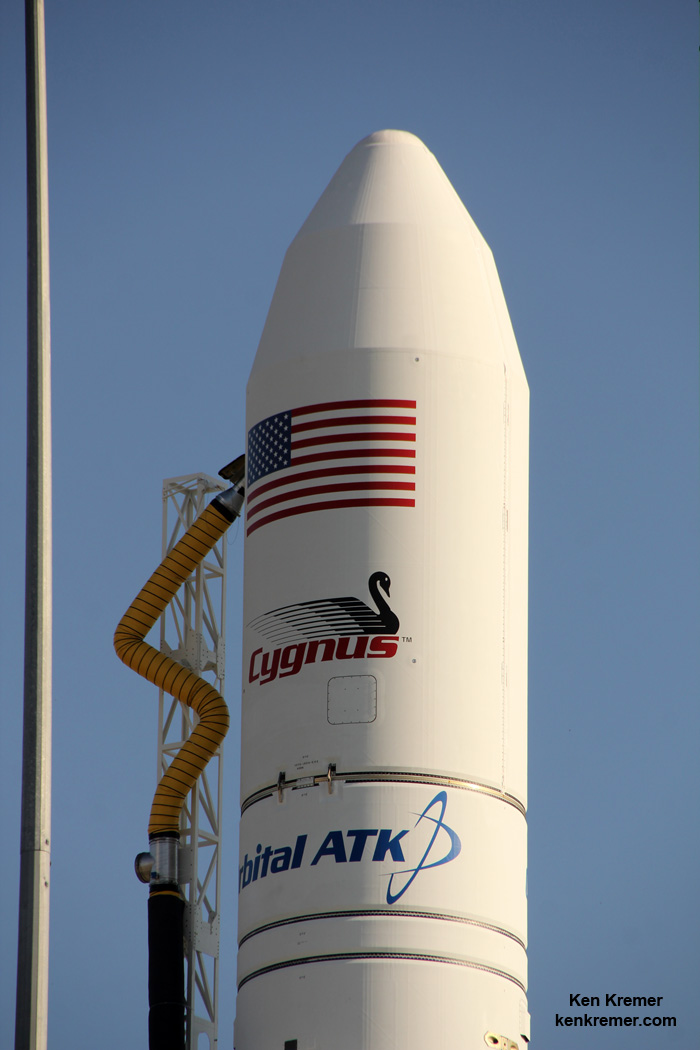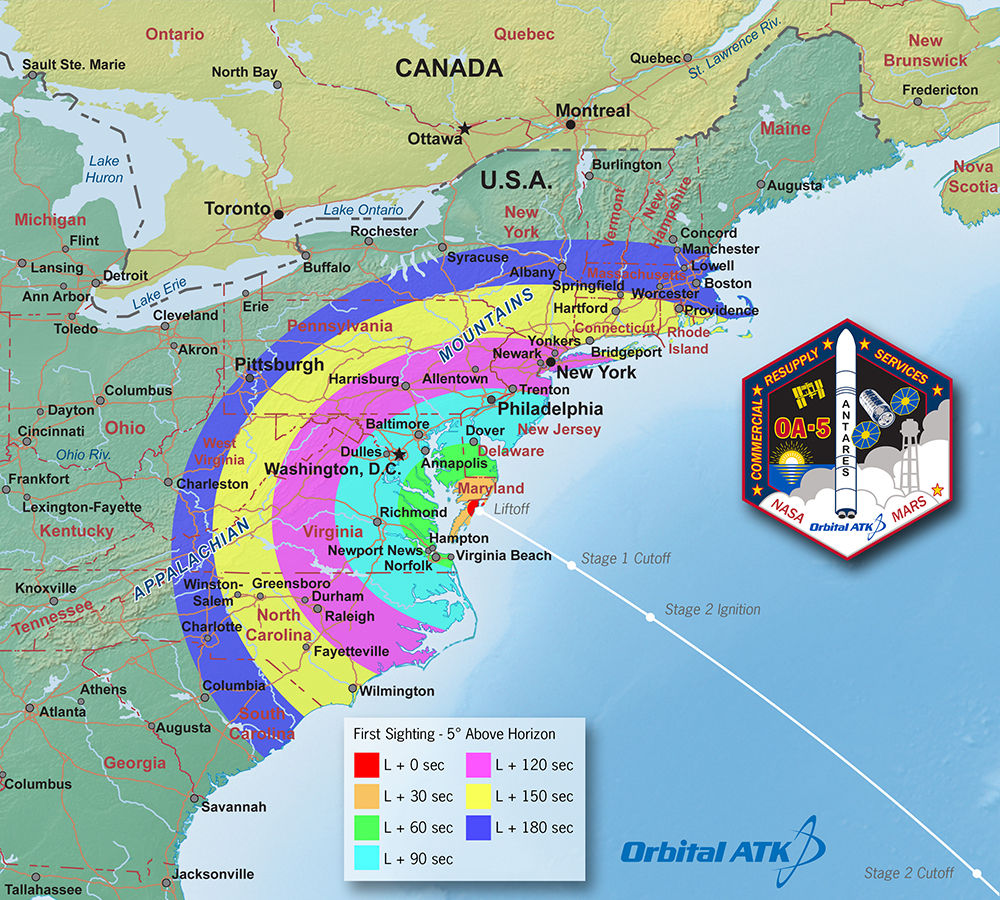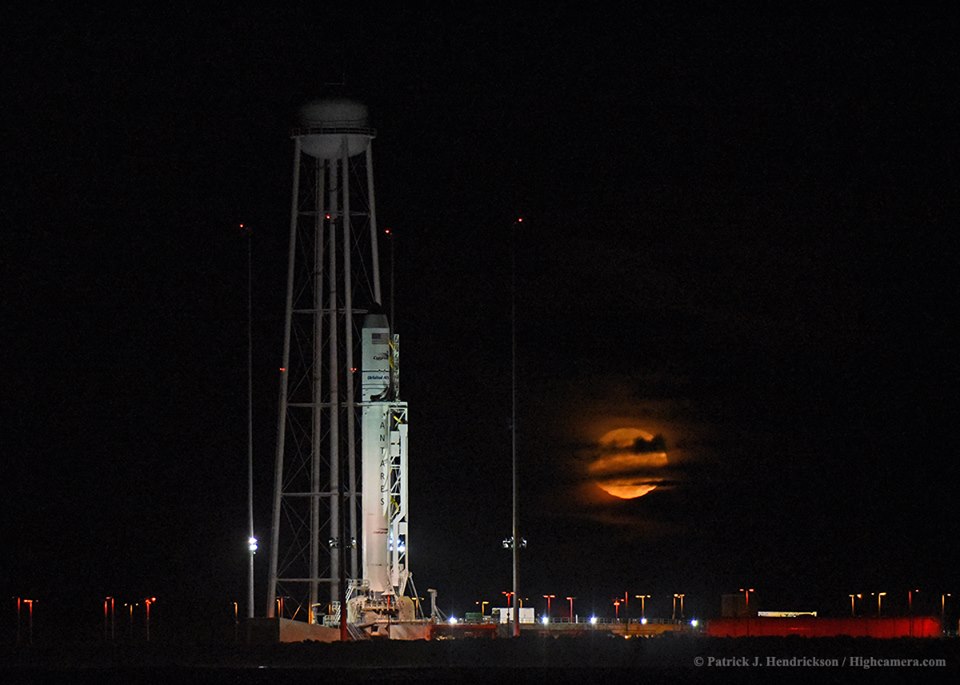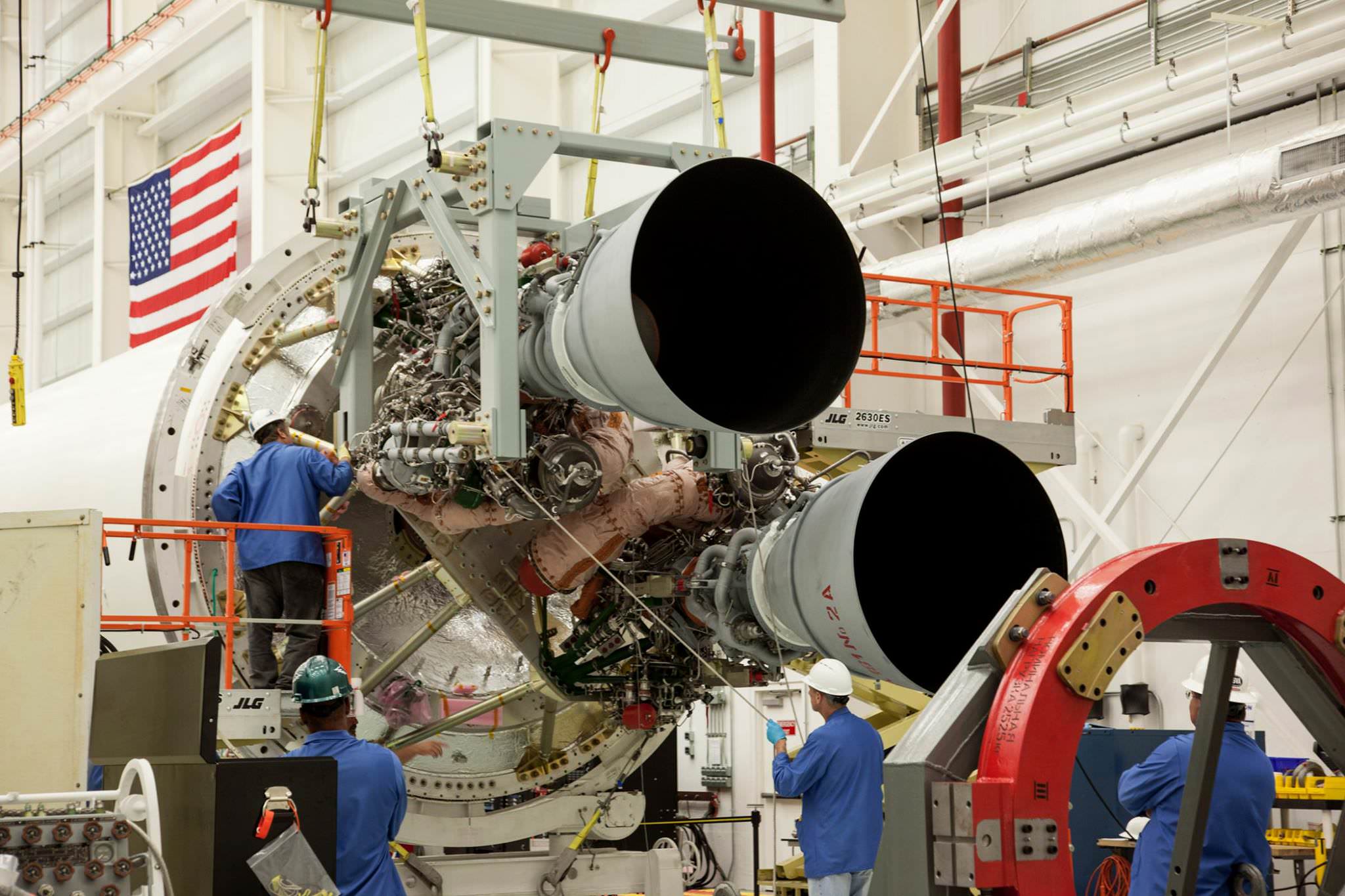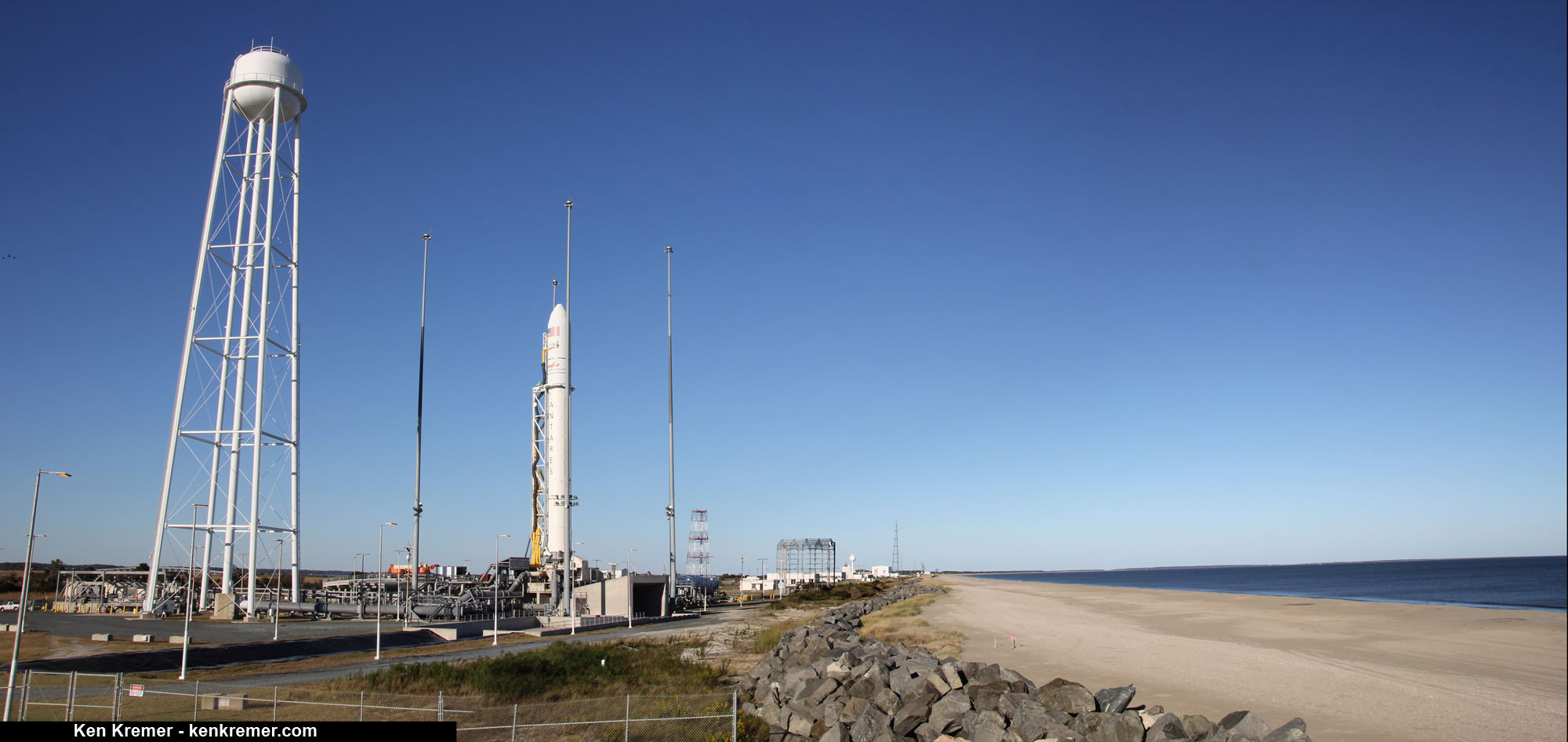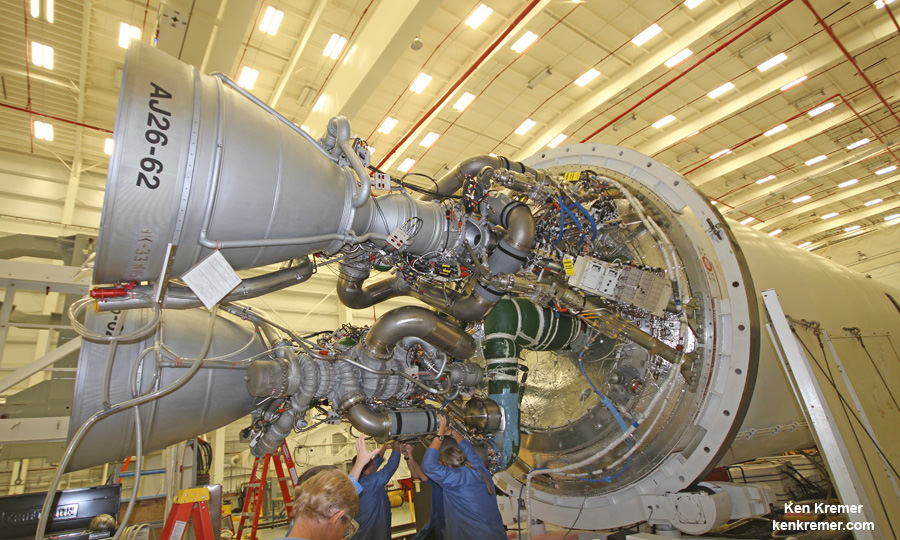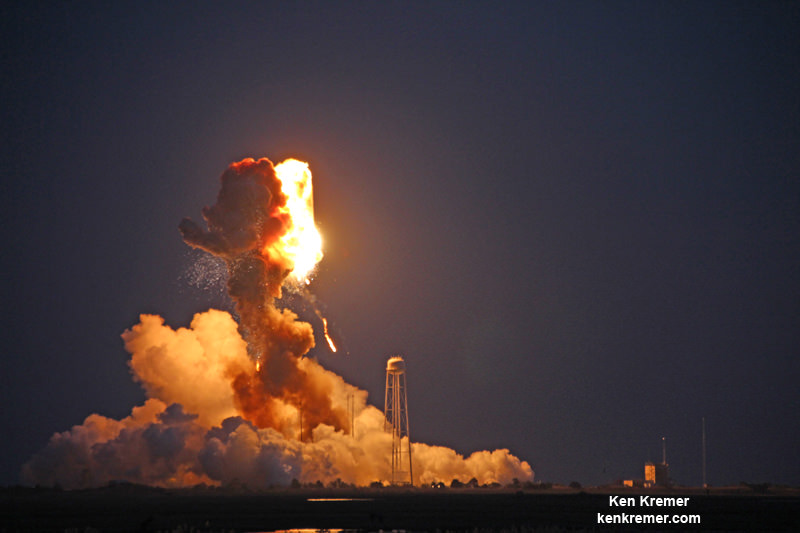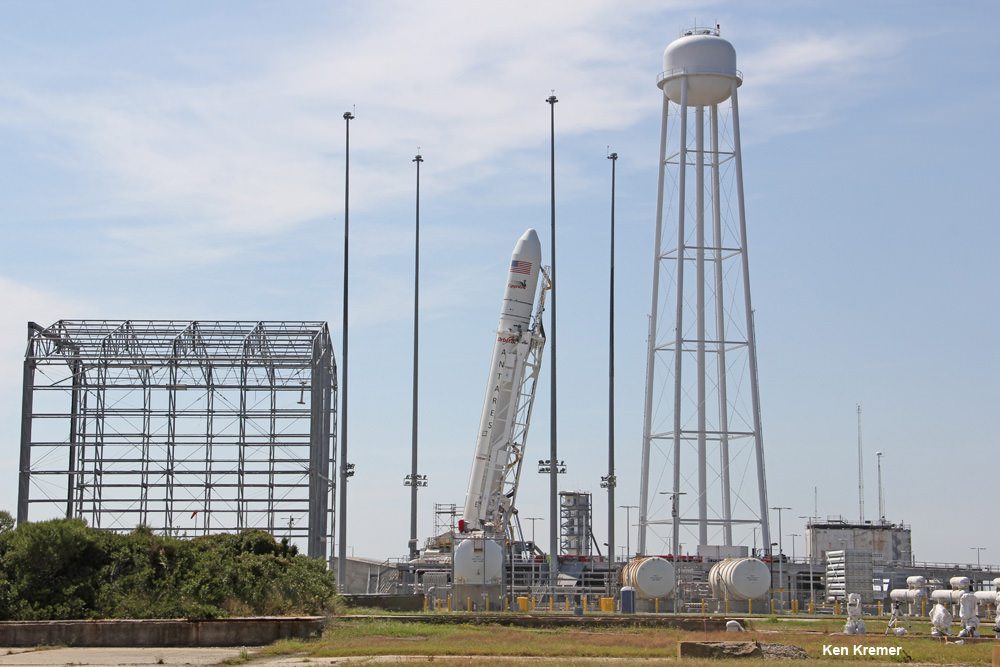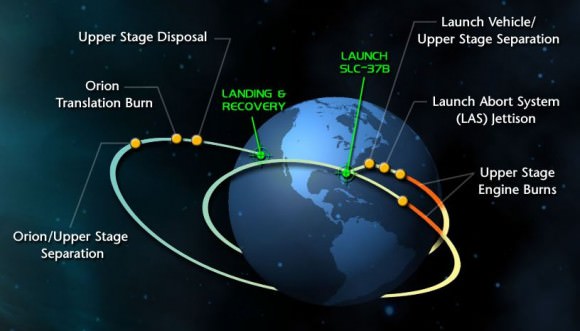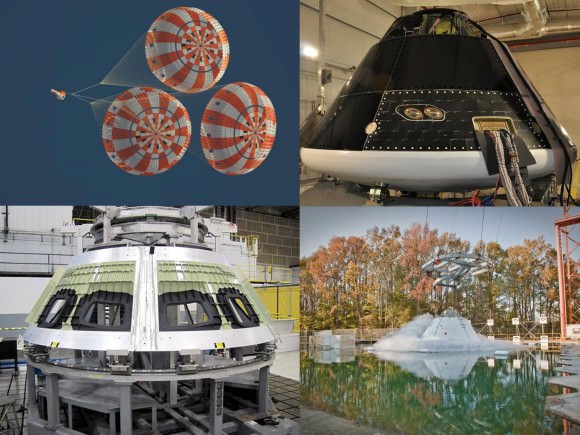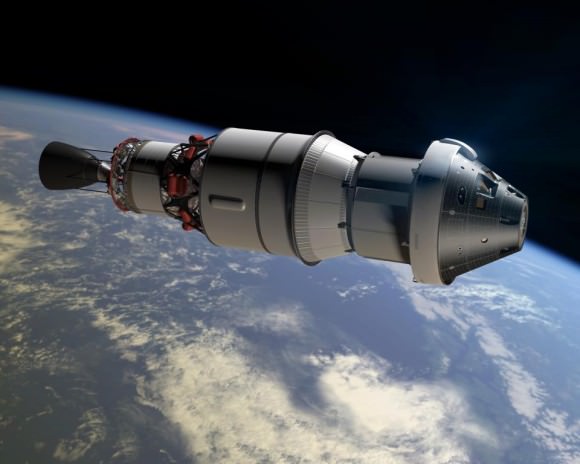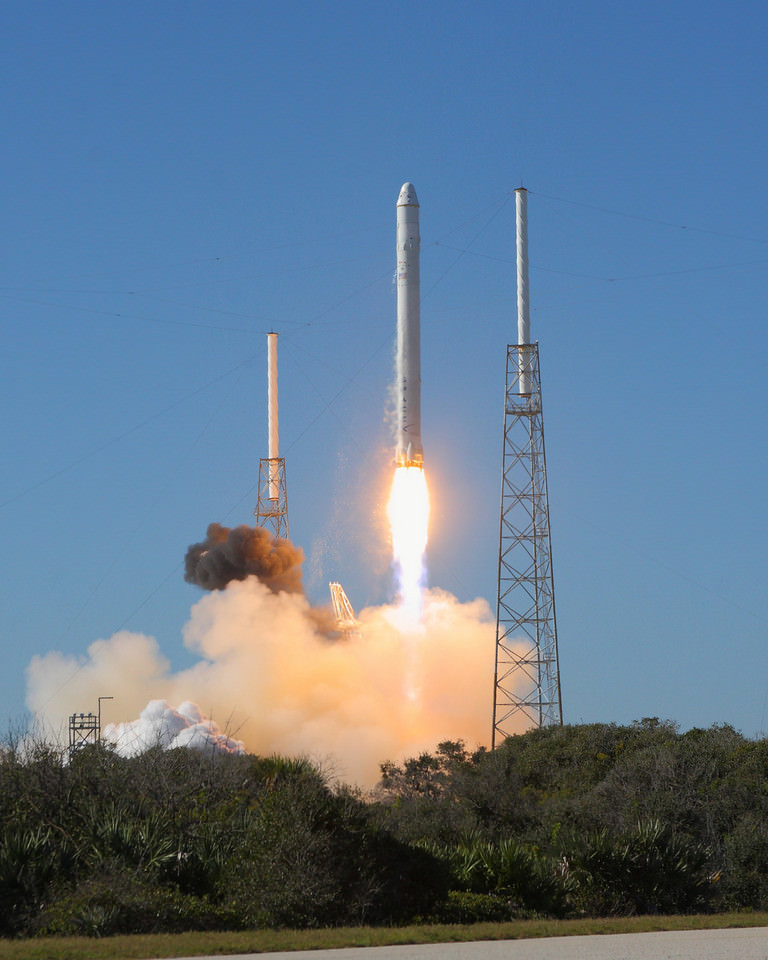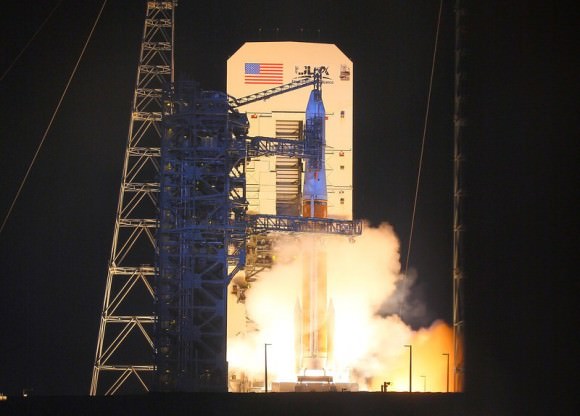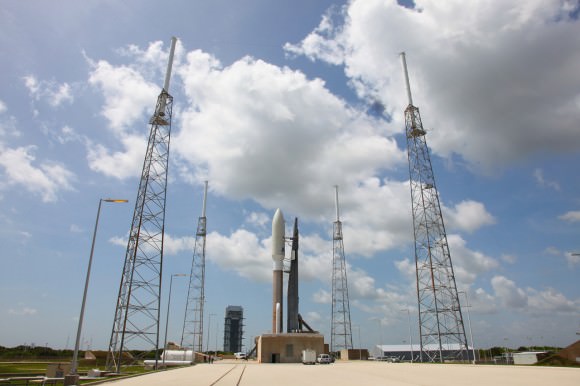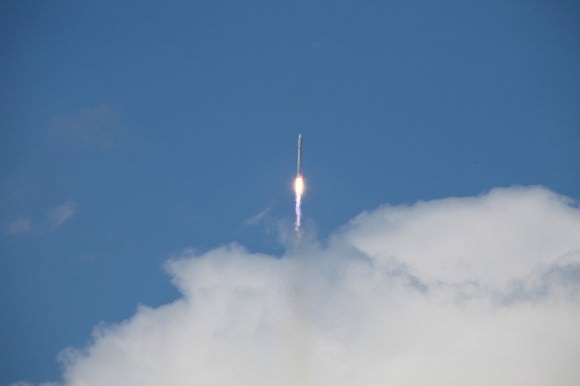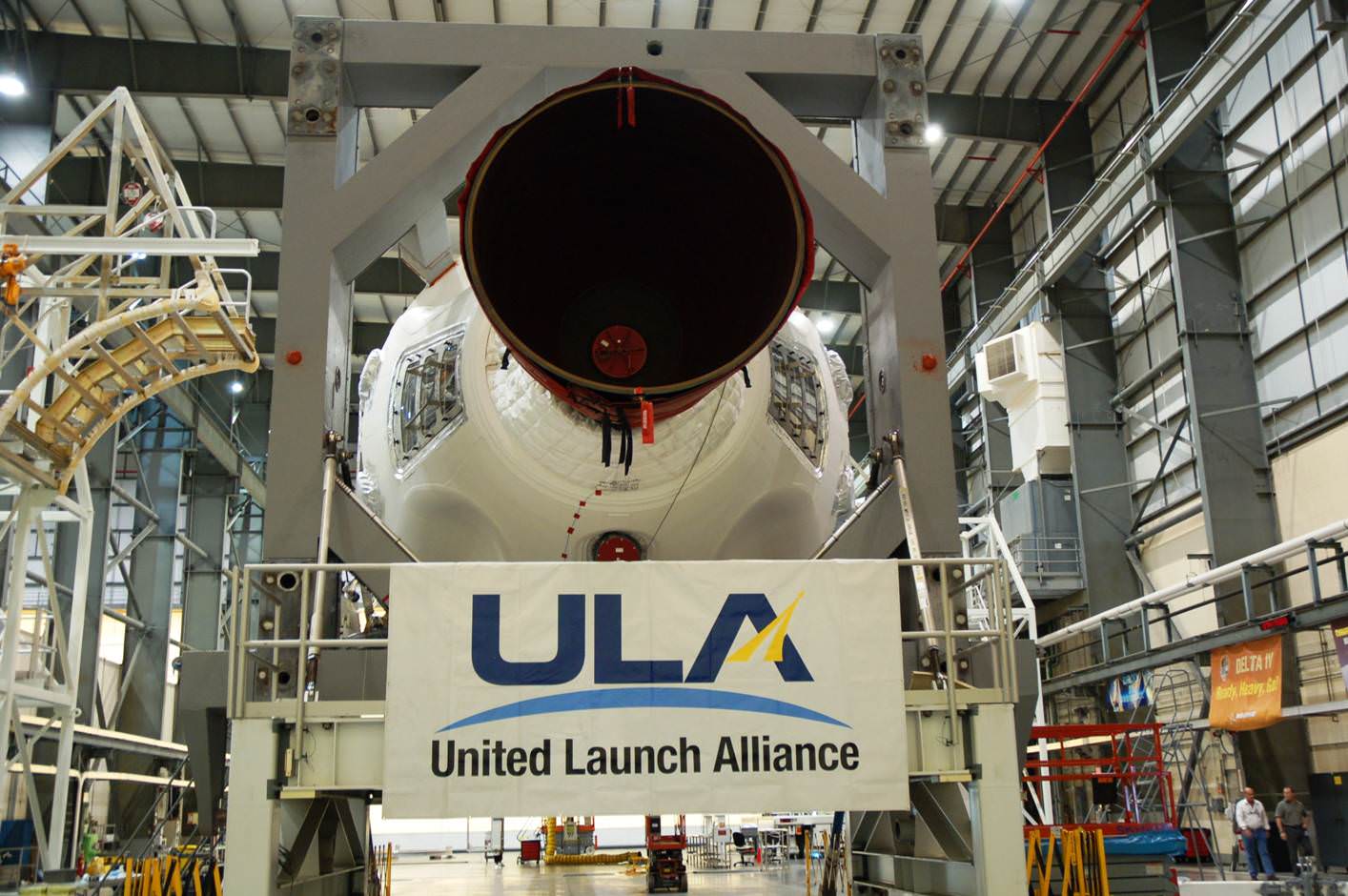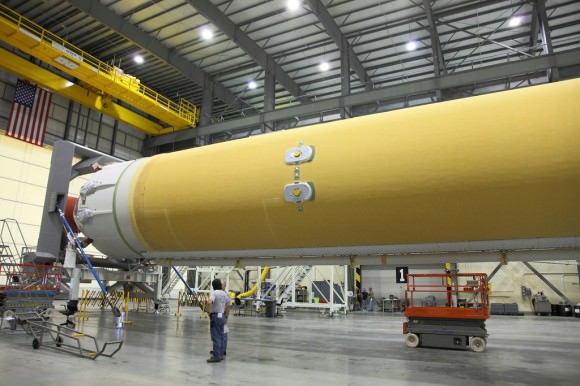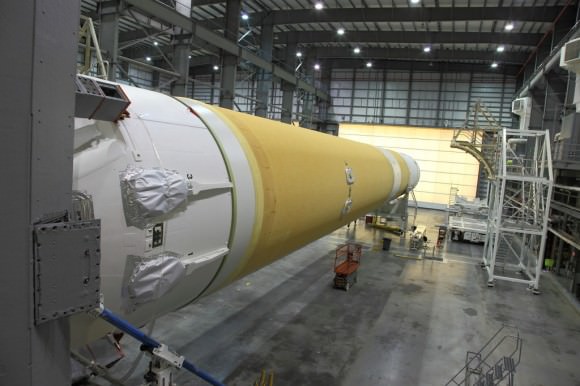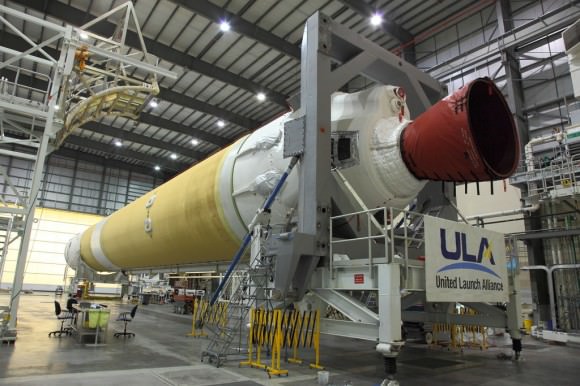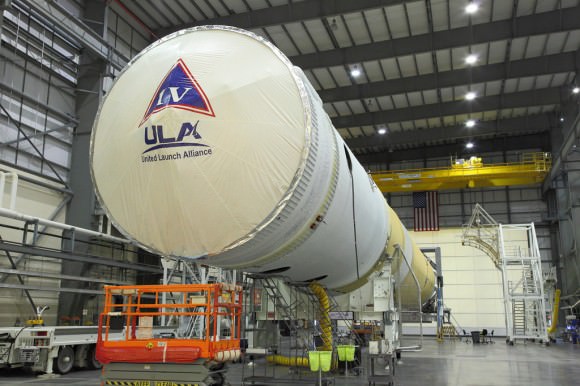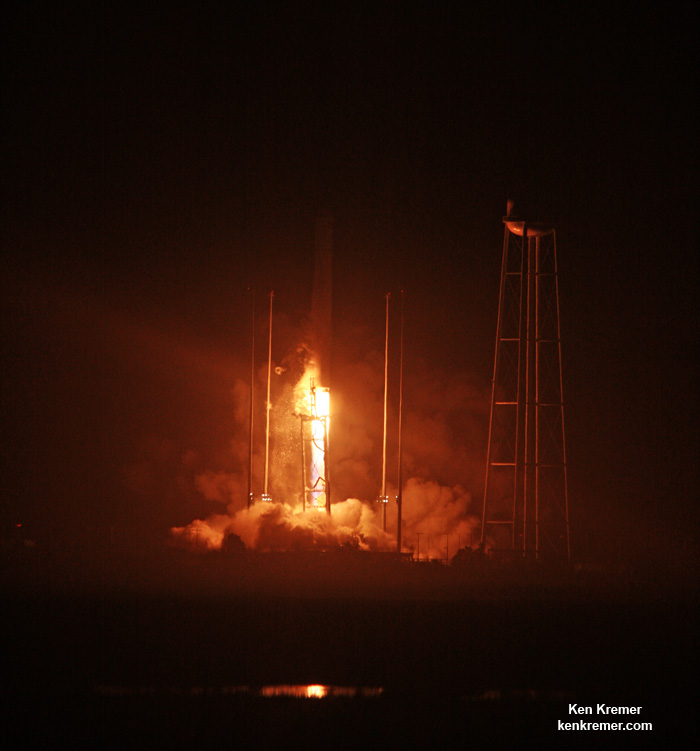
NASA WALLOPS FLIGHT FACILITY, VA – The ‘Return to Flight’ blastoff of Orbital ATK’s upgraded Antares rocket soared to a stellar success this evening, Oct. 17, on a space station bound mission to stock the orbiting outpost with two and a half tons of science and supplies.
The re-engined Orbital ATK Antares/Cygnus OA-5 mission lifted off at 7:45 p.m. EDT, tonight from the Mid-Atlantic Regional Spaceport pad 0A at NASA’s Wallops Flight Facility on Virginia’s picturesque Eastern shore spewing about 1.2 million pounds of liftoff thrust and brilliantly lighting up the evening skies in every direction.
Sporting a pair of more powerful new RD-181 engines, Antares roared off the launch pad somewhat more swiftly than the previous launches and consequently reached its preliminary orbit about one minute earlier.
Cygnus separated from the second stage as planned about 9 minutes after liftoff. The launch marked the first nighttime liftoff of Antares.
“It’s great to see launches to the International Space Station happening again from the Virginia coast – and it shows what can be accomplish with a close partnership of federal and state agencies, along with the U.S. industry, all working together,” said NASA Administrator Charles Bolden.
“I am incredibly proud of what you have all done,” said Bolden in post launch remarks to the launch team at Wallops Launch Control Center. “Thank you for all your hard work.”
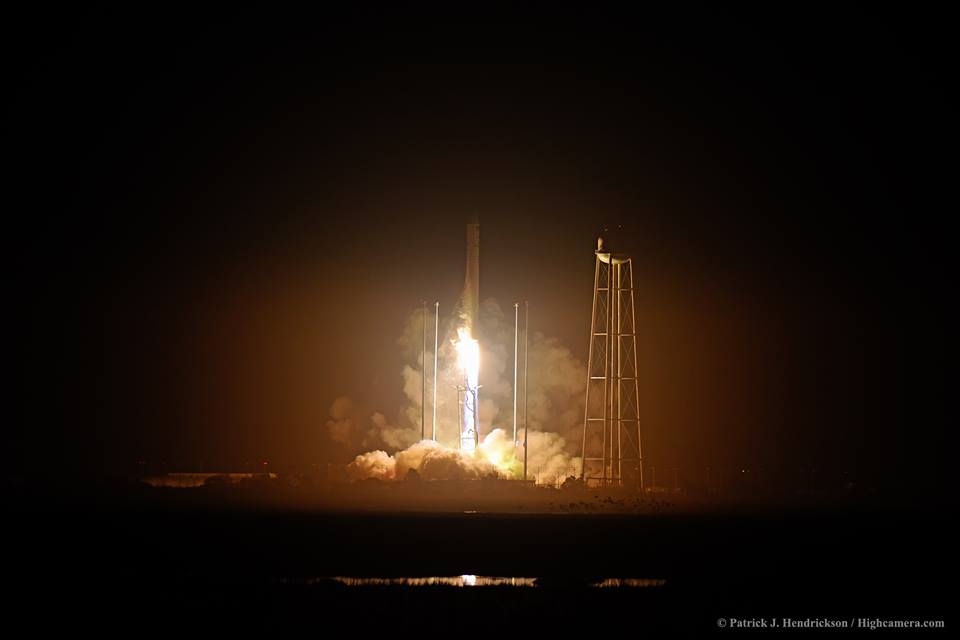
This was the first Antares launch in two years following the rockets catastrophic failure just moments after liftoff on Oct. 28, 2014, which doomed the Orb-3 resupply mission to the space station – as witnessed by this author.
The weather was absolutely perfect at 100% GO by launch time and consequently was visible to millions of East Coast residents from the Carolinas to Maine as well as inland regions.
Visibility was aided by cloudless evening skies that afforded a spectacular long distance view of the engine firings for both the first and second stages, as the rocket accelerated to orbit in a southeastwardly direction before arcing over towards the African continent.
The power producing and life giving solar arrays were deployed and unfurled about two hours after liftoff, finished at about 9:40 p.m.
Cygnus is loaded with over 5,100 pounds of science investigations, food, supplies and hardware for the space station and its crew.
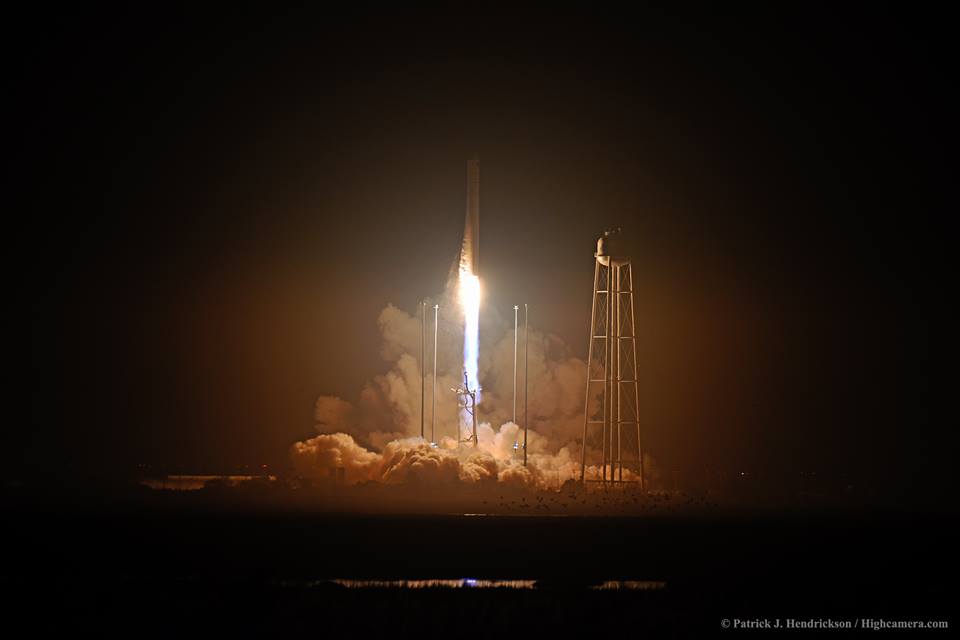
After Cygnus arrives at the ISS on Sunday, Oct. 23, Expedition 49 Flight Engineers Takuya Onishi of the Japan Aerospace Exploration Agency and Kate Rubins of NASA will grapple the spacecraft with the space station’s 57 foot long Canadian-built robotic arm. It will take hold of the Cygnus,
Ground controllers will then command the station’s arm to rotate and install it on the bottom of the station’s earth facing Unity module.
The Cygnus spacecraft will spend about five weeks attached to the space station. Cygnus will remain at the space station until November, when the spacecraft will depart the station and begin a fire experiment dubbed Saffire-II.
The 14 story tall commercial Antares rocket launched for the first time in the upgraded 230 configuration – powered by a pair of the new Russian-built RD-181 first stage engines.
For the OA-5 mission, the Cygnus advanced maneuvering spacecraft was loaded with approximately 2,425 kg (5,346 lb.) of supplies and science experiments for the International Space Station (ISS). The cargo was packed inside 56 cargo bags of multiple sizes.
The experiments will support dozens of new and existing investigations as the space station crews of Expeditions 49 and 50 contribute to about 250 science and research studies.
Among the science payloads aboard the Cygnus OA-5 mission is the Saffire II payload experiment to study combustion behavior in microgravity. Data from this exp,eriment will be downloaded via telemetry. In addition, a NanoRack deployer will release Spire Cubesats used for weather forecasting. These secondary payload operations will be conducted after Cygnus departs the space station.
Here is the Cygnus payload manifest:
Payloads:
• Spacecraft Fire Experiment-II (Saffire-II)
• Fast Neuron Spectrometer
• ACM and Experiment Tray
• SLMMD
Cargo:
• ISS Experiment Hardware
• EVA Equipment– EMU Repair Kit– EVA Supplies
• Emergency Equipment
• Photo/TV and Computer Resources– Computer – iPad Air 2
– Laptop – T61P and Connectors – Camera – Nikon D4
• ISS Hardware and Spare ORUs – Cupola Scratch Panes
– Water ORU
• Food, Crew Supplies and Crew Provisions
• Flight Crew Equipment
• Cargo Environment SensorsAdditional payload details can be found at www.nasa.gov/iss-science.
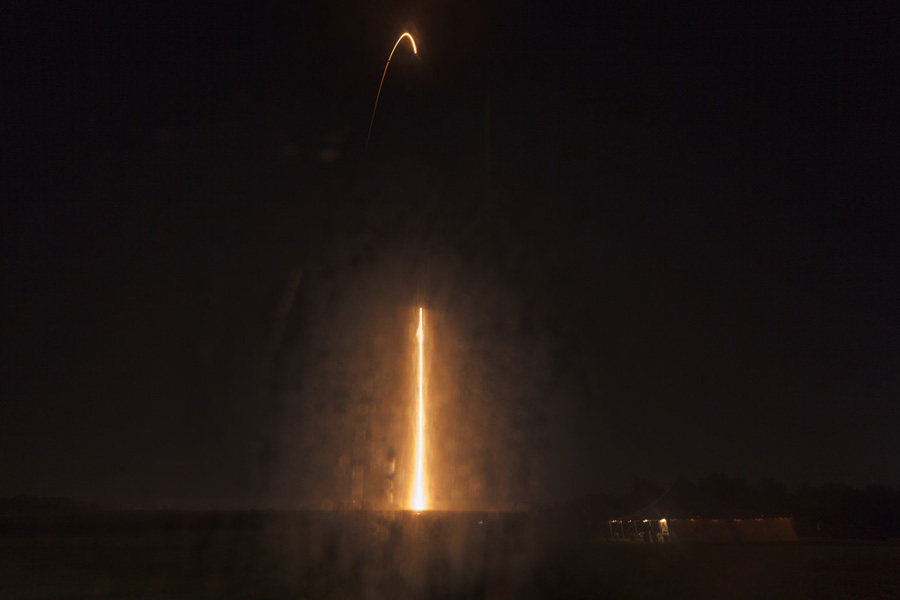
The Cygnus spacecraft for the OA-5 mission is named the S.S. Alan G. Poindexter in honor of former astronaut and Naval Aviator Captain Alan Poindexter.
Under the Commercial Resupply Services (CRS) contract with NASA, Orbital ATK will deliver approximately 28,700 kilograms of cargo to the space station. OA-5 is the sixth of these missions.
Watch for Ken’s continuing Antares/Cygnus mission and launch reporting. He is reporting from on site at NASA’s Wallops Flight Facility, VA during the launch campaign.
Stay tuned here for Ken’s continuing Earth and Planetary science and human spaceflight news.
